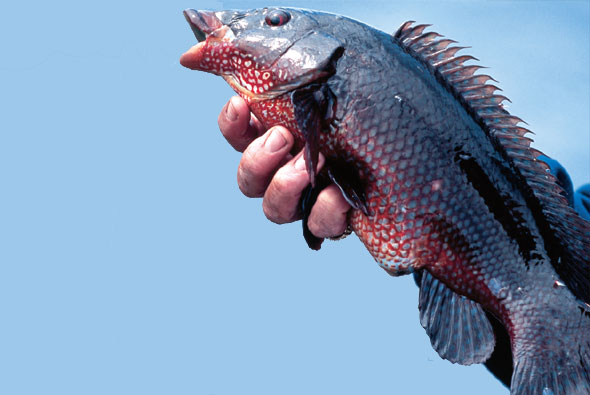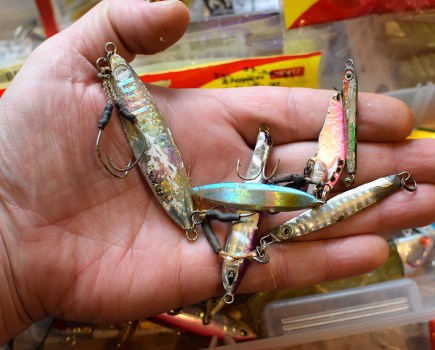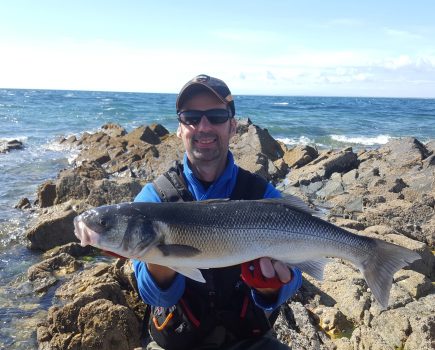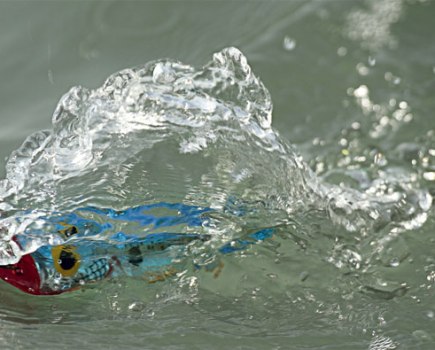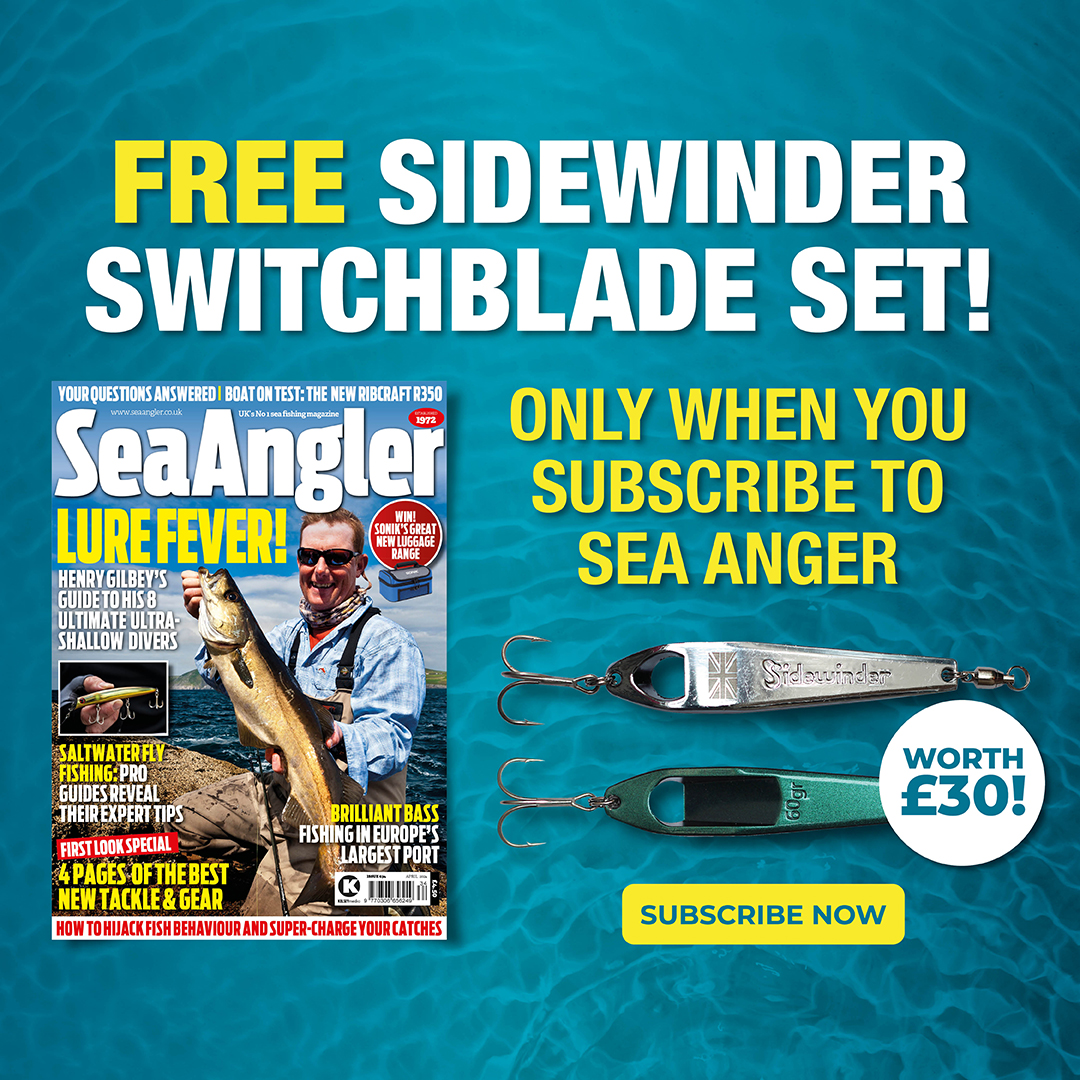Wrasse numbers have exploded and while global warming is the popular theory behind their push northwards, it is more likely their hunt for food that has encouraged them to spread their fins.
The decline of several of the important commercial species, like cod, has resulted in an untapped supply of food inshore. This has enabled many species to thrive with pout, whiting and dabs among the small fish that have enjoyed the windfall.
Wrasse have cashed in on the benefits of the natural food mountain, while also exploiting the maze of coastal protection boulder structures erected by man to buffer the coast from storms and erosion.
The toothy and not unattractive wrasse have become far more common all around our coastline and their occupation of the large rock groynes, piers and reefs have provided them with stepping stones into and up the North Sea.
Not all anglers want to catch wrasse because they are a rough ground species and fishing for them means tackle losses are inevitable. They are also generally small and considered inedible But small fish grow into big fish and now specimens of 4lb-plus are becoming more widely available as the species establish colonies. In truth, they are one of the few fish that offer a realistic chance of breaking a British record.
Only one species of wrasse warrants serious angling attention and that is the largest, the ballan wrasse. The colourful cuckoo is the only other member of the wrasse family that regularly beats 1lb, although it still considered a more southerly species.
THE POWER OF A BALLAN
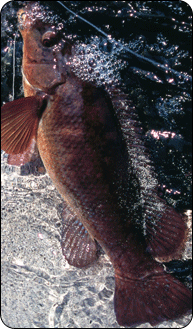 The ballan wrasse is equipped to survive in the most hostile sea environment with its broad tail and long dorsal fins giving it great manoeuvrability and power in a confined area, even in a heaving swell.
The ballan wrasse is equipped to survive in the most hostile sea environment with its broad tail and long dorsal fins giving it great manoeuvrability and power in a confined area, even in a heaving swell.
Its tough rubbery lips and impressive dentistry betrays a lifestyle among rough rock terrain where is literally chisels and wrenches shellfish off the rocks or crunches crabs, shrimps and small fish.
The exciting thing from an angler’s point of view is its ability to power-dive. Wrasse rarely roam far from a bolthole and when danger threatens they head for the nastiest snag they can find.
In most cases they stick close to an rock ledge or cave, pier edge or weed fringe. Almost any underwater feature will have its family of wrasse. They live in large colonies with their sex determined by the group’s need to increase its numbers. All ballans are born female.
The ballan wrasse’s normal colour matches the surrounding sea bed and kelp, so expect some rich brown and greens, while some mature fish, usually those that have changed sex to males, take on a range of bright reds and oranges, some with white spots, all aiding camouflage.
Infant ballan wrasse are coloured green and brown and look similar to freshwater tench, while blue and green markings add confusion leading to problems regarding mini species records.
Find one wrasse and you will always find more. Unfortunately this also means that easily-reached wrasse marks get exploited with the bigger fish getting caught and only tiddlers remaining.
Best venues to find the largest specimens are remote rugged cliff faces and rich kelp reefs with specimen wrasse fishing rather specialised and, in some cases, dangerous.
WRASSE FISHING TIPS
● On some rugged coasts the bigger fish are found just feet under the surface so beware of fishing too deep for them. You can also catch them extremely close to where you are standing.
● Wrasse attack bait very quickly with the bigger fish muscling out the tiddlers. If you don’t get a bite in minutes or only catch tiddlers, move.
● Look for a surfy hole in the rock face. Wrasse take advantage of the swell and feed where marine life may be dislodged by the wave action.
● A few limpets or shore crabs chopped up is a great way to groundbait for wrasse.
● If casting over a rocky sea bed, fish a grid system. Imagine the area in front of you is a noughts and crosses grid and cast your bait to the different squares to find the fish.
● Wrasse live in tight groups around a particular bolthole and casting accurately can make a difference. It can also help you avoid the worst snags.
● The best hooks for wrasse are Kamasan B940S or Special XW in sizes 1 to 3/0.
● Despite their rugged looks wrasse are a delicate species so return them at water level if possible. They will not survive a long drop from a cliff top.
WRASSE FACTS
● British boat record: 9lb 7oz, caught off Jersey, Channel Islands.
● British shore record: 9lb 1oz at Portland, Dorset.
● Latin name: Labrus bergylta.
● Other wrasse species: Cuckoo, ballion’s, corkwing, goldsinny, rock cook and scale-rayed
● Nicknames: Rock fish and rock tench.
SAFETY WARNING
The more rugged and inaccessible the rocks and cliffs the more likely you are to encounter big wrasse, but this does involve danger and there are a few sensible precautions.
Don’t fish alone in dangerous places, wear decent footwear and safety clothing and beware when walking over wet rocks, which can be extremely slippery.
Don’t rely on a mobile telephone because a signal is not always ensured under steep cliffs or remote places. Beware of the swell, especially on Atlantic coastlines where rogue waves are a real danger.
● BOTTOM LINE – DON’T TAKE CHANCES.
TACKLE AND TACTICS
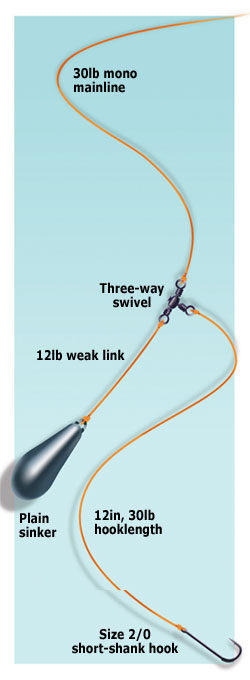 Small wrasse are a great starter species for youngsters because most piers and some harbours and breakwaters hold a population, so there is no casting required. Simply lower a ragworm bait down.
Small wrasse are a great starter species for youngsters because most piers and some harbours and breakwaters hold a population, so there is no casting required. Simply lower a ragworm bait down.
Fish with a float or leger with small size 6 hooks baited with worm. Wait for the rod tip to bounce and it’s ballan wrasse on.
For specimens over 1lb, strong tackle is essential and it’s more efficient to fish direct and ignore float fishing, although you can employ a larger float to stop fish diving to shelter when fishing from cliffs and rock edges.
A standard beachcaster and fast-retrieve reel loaded with 30lb mono is the basic outfit. Braid line works well if casting is not required with its lack of stretch giving immediate reaction to a bite and preventing the fish escaping back into its bolthole.
There is no place for multihook rigs or rod-rests because flying spare hooks will snag and a rod-rest will get in the way.
Hold the rod and feel for bites, then you can react swiftly. For the biggest wrasse a size 2/0 short-shank hook to a 12in 30lb snood is ideal. A three-way swivel provides the basis of the proven wrasse rig. Your mainline is tied to the top eye, hooklength on the side eye and weak link to the lead weight on the bottom eye.
Because the terrain is invariably rugged, a rotten bottom lead system is recommended if you are casting over or among rocks and kelp. Tie the lead on with a length of 12lb mono.
A great tactic for catching big wrasse from a cliff edge is to fish the bait away from the rock face. Hold the rod out and draw the fish away from its bolthole where you have a better chance of stopping the fish snagging you up.
Wrasse are adept at chewing bait to shreds without getting hooked. To hook them hold the rod and ignore the pecking bites, but strike when you get a steady and continuous pull down.
Strike, pump and reel quickly to get the fish away from the rocks. In a casting situation bites will be similar, but you must react quickly, pump the rod and reel at the first sign of a bite. Stopping to feel if the fish is hooked is inviting trouble

